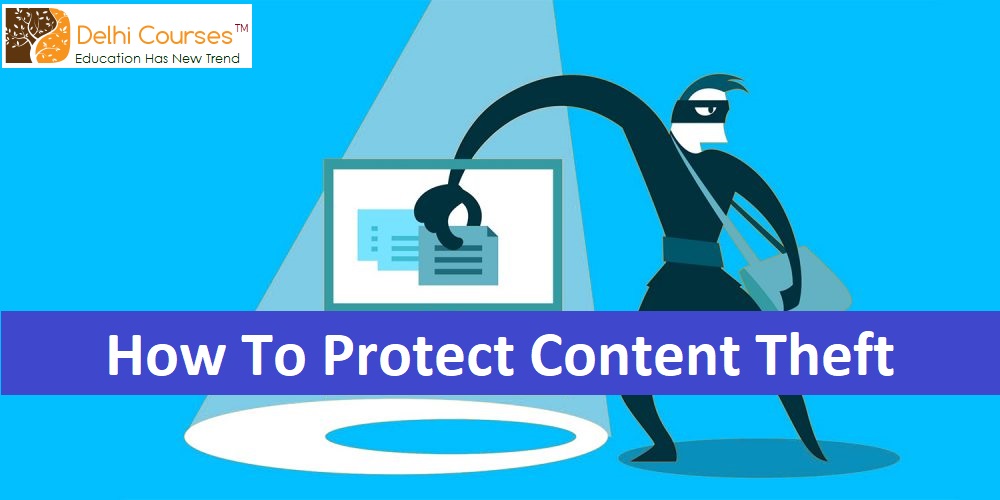Contrary to what many people think, creating web content is hard work. Creating quality content takes a lot of time, research, planning, organizing, brainstorming, and editing. Depending on the length of your content, it could really be a time-consuming process. That’s why it’s so frustrating and heartbreaking when you find out that someone has stolen your work without your permission and without giving you any credit.
Even worse, most of the time you don’t even know that someone has copied your work. Plus, if you’re constantly having to research, plan, organize, brainstorm and edit, how can you possibly keep up? Well, it’s definitely hard, but not impossible. Let’s take a look at some methods that will help you can keep up with the theft of your content and even have it taken down if needed.
Copyright Your Work
According to About.com, “a copyright is a form of intellectual property law which protects original works of authorship […]. Copyright law does not protect facts, ideas, systems, or methods of operation, although it may protect the way these things are expressed.”
Obtaining a copyright for your work will take some time and it can be a lengthy process; plus it’s not free and can end up being quite expensive (depending on your country and circumstance). There are copyright rules and regulations for each country, so you’ll really need to do your research before taking this route. Make sure to go over the copyright laws and use the appropriate website for your country.
While your work is actually copyrighted the moment you create and publish it on the web, an actual copyright registration is always better and serves as legal proof whenever a problem arises.
Obtain a License
I’m sure you’ve heard of Creative Commons license, especially for images. It a free copyright license that lets you set the rights for how other people can use your work. You will of course keep your copyright, but it gives others the ability to use and distribute your work as defined by you. As you can see from the different types below, a Creative Commons license can go from one extreme to the other.
You may also like: How To Write Content That Shines

The 6 different types of licenses:
Attribution – others can use and edit your work (even commercially) as long as they give you credit.
Attribution Share Alike – others can use and edit your work (even commercially) as long as they give you credit and license their new creation using the same terms as yours.
Attribution-NoDerivs – others can use you work (even commercially), but cannot edit it and must give you credit.
Attribution-NonCommercial – others can use and edit your work (non-commercially only) as long as they give you credit, but they do not have to license their creation under the same terms as yours.
Attribution-NonCommercial-ShareAlike – others can use and edit your work (non-commercially only) as long as give you credit and license their creation under the same terms as yours.
Attribution-NonCommercial-NoDerivs – others can use your work (non-commercially only), but cannot edit it and must give you credit.
Do check: Content Penalties and Confusions -Duplicate vs. Low Quality vs. Farming
Select a License
It’s pretty easy to select a license for your content, plus they’ll give you an HTML code so that you can add the license information to your website or blog for all to see.
DMCA Protection Badge
DMCA offers another free alternative to protecting the content on your site. “The DMCA.com Protection Badge guarantees that online criminals and content thieves hesitate before copying your original material.” It’s as simple as registering and then adding a badge to your website or blog. They have 50+ badge designs to choose from and your protection includes page tracking and monitoring, plus 1 free DMCA Takedown per year. You can also build your own badge and even add a watermark to all of your images.
Check for Plagiarism
There are various duplicate checking websites that can quickly search for copies of your content on the web. For most of them, you either enter the URL of your content or copy and paste the text to start a search.
Check for duplicate content using these sites:
CopyGator
Article Checker
Plagium
Dupli Checker
Copyscape
With most tools like this you have to manually search on a regular basis, but CopyGator (listed above) will continually monitor your content and alert you whenever it’s copied. So it’s definitely a good idea to sign up for that service.
Final Thoughts
Don’t let content thieves get away. While it’s tempting to just ignore it and move on instead of going through a lengthy process of remove, this could actually cause even more problems for you. Even though you’re the originator of the content, you could get penalized by search engines for having duplicate content. If it keeps happening, your website can even get banned from search engines altogether, which will also hurt your rankings and traffic.
So it’s really important to keep up with your content and make sure you take action when you find out that it has been copied. Unfortunately, playing the “nice guy” won’t get you anywhere when it comes to content theft. So never be afraid to stand up for what’s yours.
Hope this help & for more you can also join our Digital Marketing Course.

Delhi Courses Academy is a leading institute offering the best digital marketing course in Delhi, known for its practical training, affordable fees, and industry-focused curriculum. With 15+ certifications, 100% placement assistance, and hands-on projects, it prepares students for real-world challenges.

